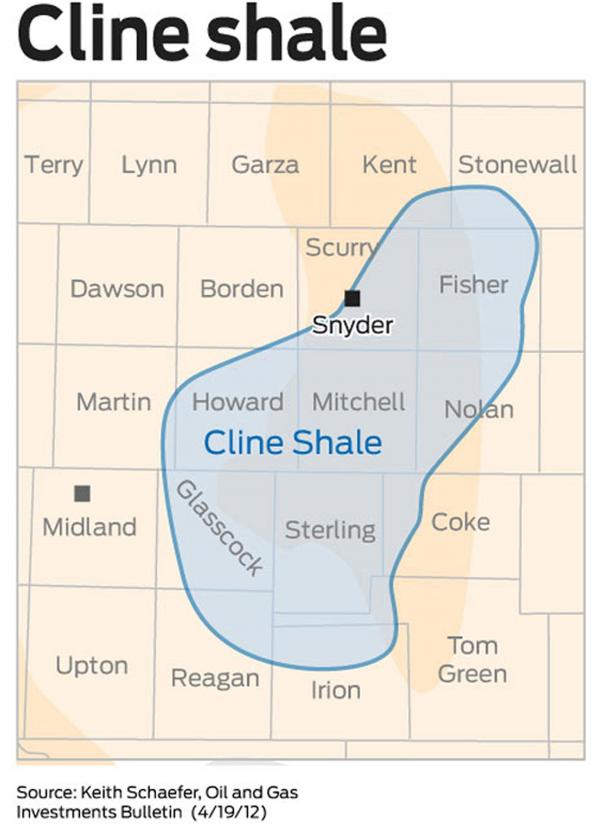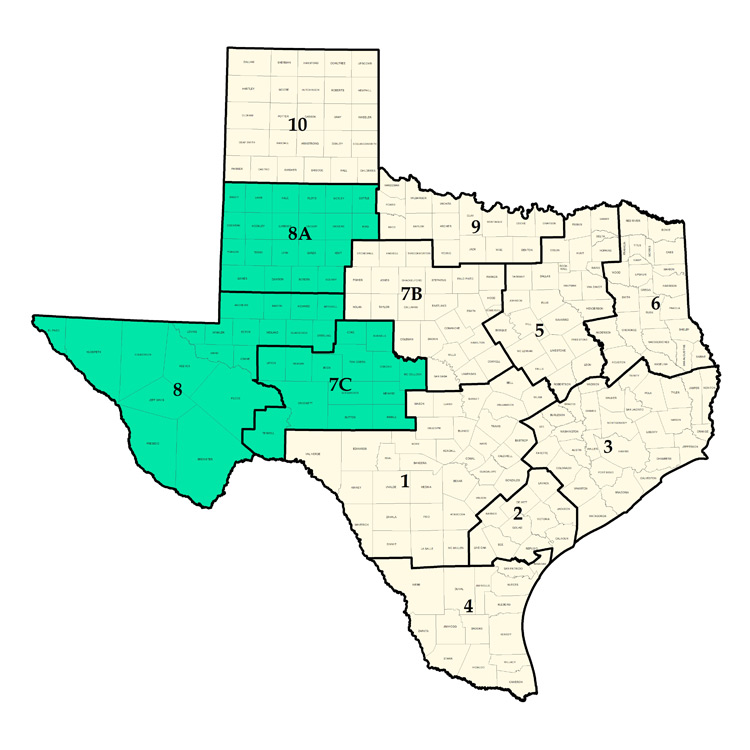When the news discusses Texas‘ big oil and gas shale plays, they usually mean the Eagle Ford and the Barnett shale. The University of Texas at San Antonio produced a study recently, the “Economic Impact of Oil and Gas Activities in the West Texas Energy Consortium Study Region”, that highlights the opportunities in the Cline shale.
 The study estimates that by 2022 the Cline shale will bring more than 30,000 jobs to west Texas and have a $20 billion dollar economic impact. The Cline shale covers less surface area than the Eagle Ford or Barnett, but its hydrocarbons are denser. There is a potential for 3.6 million barrels of oil per square mile to be recovered, for a total of about 30 billion barrels. These numbers indicate that the Cline shale may be larger than both the Eagle Ford and the Bakken field in North Dakota. In fact, the Cline shale may be bigger than both those two plays combined.
The study estimates that by 2022 the Cline shale will bring more than 30,000 jobs to west Texas and have a $20 billion dollar economic impact. The Cline shale covers less surface area than the Eagle Ford or Barnett, but its hydrocarbons are denser. There is a potential for 3.6 million barrels of oil per square mile to be recovered, for a total of about 30 billion barrels. These numbers indicate that the Cline shale may be larger than both the Eagle Ford and the Bakken field in North Dakota. In fact, the Cline shale may be bigger than both those two plays combined.
The study was done by the Center for Community and Business Research, part of the Institute for Economic Development at UTSA. The study notes that in 2012 $14.5 billion was added to the west Texas economy by oil and gas development and 21,450 full time jobs were created from the oil and gas industry in west Texas. These employees received $1 billion was paid in salaries and benefits in 2012 alone. The study estimated that about 854 vertical wells and 57 horizontal wells were completed in 2012 in this region. The goal of the study was to create a 2012 baseline of industry activity in the region and create forecasts through 2022. “This baseline study is intended to help communities in West Texas plan and prepare for the prospect for increased oil and gas production in the area down the line. For many counties, activity is clearly in the early stages,” said Thomas Tunstall, the research director for this study.
 Texas Oil and Gas Attorney Blog
Texas Oil and Gas Attorney Blog




 Koch Pipeline is based in
Koch Pipeline is based in